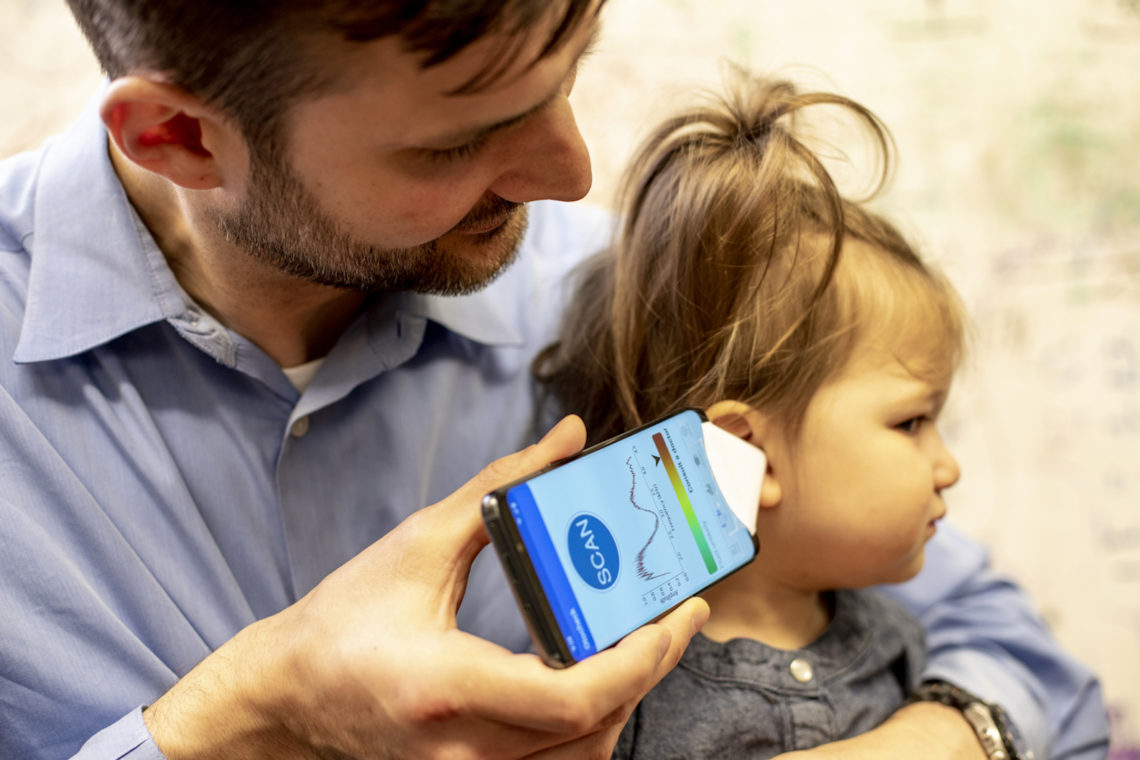Ear infections are a common concern for parents of young children. Engineering researchers in the US have developed a smartphone app that could help with early detection.
When children are very young, it can be difficult to work out when they are suffering from an ear infection, as symptoms vary and the children might not yet be able to communicate them to parents or doctors.
Infections cause a buildup of fluid behind the eardrum, which can be painful and affect hearing, sometimes making it more difficult for children to learn to talk. Other medical conditions can also cause fluid to accumulate.
Researchers from the University of Washington have developed a simple smartphone app that can help detect ear infections at home or in remote areas with limited resources. According to Shyam Gollakota, an Associate Professor of Computer Science and Engineering, the app could be “game-changing”.
“A key advantage of our technology is that it does not require any additional hardware other than a piece of paper and a software app running on the smartphone,” he added in a statement.
Chirpy solution
According to the research paper, recently published in Science Translational Medicine, the app emits a soft chirping sound from the smartphone’s speaker into the patient’s ear through a funnel that can be easily constructed from an ordinary sheet of paper.
The chirps are reflected off the eardrum, and bounce back through the funnel. The phone’s microphone ‘hears’ both the original and reflected chirps, which interact differently depending on whether or not there is fluid inside the eardrum.
“It’s like tapping a wine glass. Depending on how much liquid is in it, you get different sounds. Using machine learning on these sounds, we can detect the presence of liquid,” said researcher Justin Chan.
If there is fluid present, the combination of original and reflected sound waves will have a narrower, sharper dip when analysed by the app than the analysis of combined waves from a fluid-free eardrum.
‘Ideal setting’
The researchers trained their app on patients aged between 18 months and 17 years who were being treated at a children’s hospital. Around half were due to have ear tube surgery to drain fluid, while the rest were waiting for other kinds of surgery.
“When we put in ear tubes, we make an incision into the eardrum and drain any fluid present. That’s the best way to tell if there is fluid behind the eardrum. So these surgeries created the ideal setting for this study,” said researcher and surgeon Dr Sharat Raju.
The researchers tested the children right before their surgery using the smartphone app, and found that their algorithm was accurate 85 per cent of the time. The researchers said this was comparable to published results from testing methods used by medical specialists.
They followed up by testing the trained app on 15 ears of children aged 9 to 18 months, successfully detecting five ears that contained fluid.
“Even though our algorithm was trained on older kids, it still works well for this age group,” said researcher Dr Randall Bly, adding that this is critical because children in this age range have a high incidence of ear infections.
The research team trained parents to test their own children, and found that they were able to use the app to detect ear fluid with a similar accuracy to doctors. They are now working on commercialising their app for use by the general public.
“Fluid behind the eardrum is so common in children that there’s a direct need for an accessible and accurate screening tool that can be used at home or in clinical settings,” Raju said.



